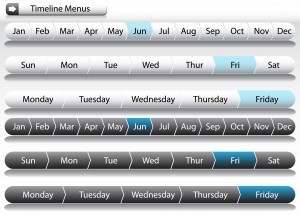A Word about Timelines and Outlines Part 1 of 2
For freely offered writing Resources go to RuthFordElward.com
Assuming that you’ve decided on your genre, have cleared a sufficient amount of time, chosen a place and space for working, and you have identified the type of reader that would like your book, you are now ready to move to the next phase: making an outline.
Making an outline of the story for your book or novel is one of the most important steps in writing one. However, the process doesn’t end with that, along with the outline you’ll need to make sure the timeline of events in the book are predefined so that there isn’t any confusion.
To start, list the major events that you’d like to include, entitle each one. As the list is prepared, make sure to note the beginning and end of each event. Then, create a visual timeline. This can be done by drawing a single horizontal line on a piece of paper and marking various points as incremental periods to write down the details. Remember, a timeline, once completed, should be followed as close as possible, allowing for some ‘wiggle room’ should something additional occur to you once you begin writing.
After you have drawn the line and marked incremental points, jot down the title of each event listed in the first step. This should be done to display a well-planned flow of events that are to take place in the story. You can write the events which hold an importance in red to make sure there is more stress given to them while writing the story. This will act as a reference page for you as you progress. Creating an outline will enure that your manuscript doesn’t suffer from the mid-novel ‘sags’, which means that it loses its energy and pacing.
The final step is in making sure that the timeline is understandable. One can use images, references or sources from which you have researched for the story or even dates which you are planning to mention in the story. If one is being highly informative in their story, they can jot down sub-points near the main points that are marked. A tip in doing this is to use pens of various colors to complete the process, this will also make it look attractive and easy to understand. This completes the timeline. The next step is to coordinate it with the outline of the story and make changes as required.
Now that there is an understanding of a timeline, we’ll move onto the outline process.
Ruth Ford Elward's Blog
- Ruth Ford Elward's profile
- 9 followers




